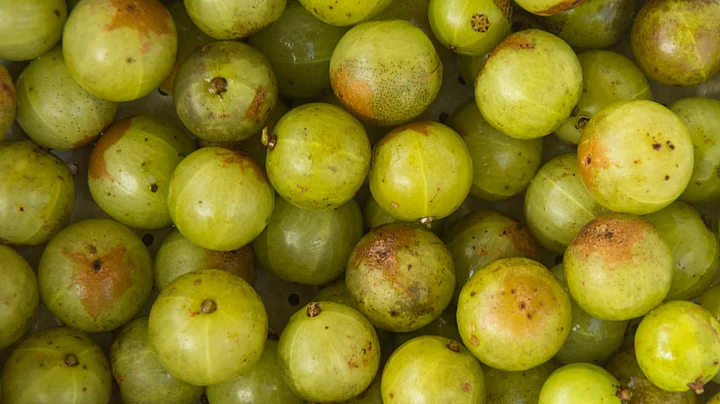This historical Indian fruit had almost become alien to our generation a decade ago. Even the older lot would usually have it in the form of amla murraba (preserve).
When I described it to the younger generation, I often had to describe it as a light green tomato-shaped fruit available through winters. It’s been quite a comeback for amla since then, where now I see almost every person, young or old, trying to have it in some form or the other. From dried amla, amla candies, sherbet, churan, pickles, amla chutneys to fresh amlas – amla, or, the Indian gooseberry seems to have become hugely popular.
Its rediscovery comes as no surprise considering its benefits and use in ayurvedic medicine. The plant is also cultivated in Sri Lanka, China, and Malaysia. It has a sour and astringent taste and excellent vitamin C content and is easily the richest source of this vitamin.
More Vitamic C Than Oranges
Amla is reported to contain nearly 20 times more vitamin C than oranges. While 100 gms of amla provide 600 mg of vitamin C, 100 gms of oranges provide only 30 mg. The vitamin C of one tiny amla is equivalent to about two oranges.
Vitamic C Deficiencies? No More
One amla easily meets the daily adult requirements for vitamin C. Easily assimilated by the human system, amla helps keep vitamin C deficiencies like scurvy at bay. Vitamin C is also a powerful scavenger of free radicals which cause cell damage leading to several diseases including cancer, cataract, heart disease, diabetes and ageing. If taken along with iron rich foods. Vitamin C can cure anaemia by enhancing iron absorption.
Amla is Good, Period – Fresh or Dried
Vitamin C, which is usually heat sensitive and gets destroyed on processing, is retained by amla as it contains a special chemical which prevents the vitamin’s oxidation and minimizes its losses. Interestingly, the vitamin C in amla is retained well – both in fresh and dried form.
Ayurveda’s Hero
Amla is an important constituent of triphala, a known ayurvedic formulation commonly used for gastro-intestinal complaints – including indigestion and constipation. It is also an integral ingredient of chawanprash, the immunity boosting Indian tonic.
Benefits Galore
Amla is clearly the champion of the human system. Besides its cooling, diuretic and laxative effects, the kindly fruit also boosts immunity, slows ageing, restores vitality, rejuvinates all bodily systems and is a powerful antioxidant.
Research argues for the benefits of amla in fighting heart disease, diabetes and age-related kidney disease. Regular consumption of amla is known to lower blood cholesterol and prevent hardening of arteries. A study also confirmed that amla causes significant decrease of gastro-intestinal injury and hyperacidity.
Season or No Season
While more predominant in the winters, amla can be consumed through the year by preserving it as powder, pickle and preserves. But beware, the traditional amla murabba is too high on sugar content, which may be counter-productive. While in season, add it to your favourite juice for the tang and get loads of good health in the bargain!
(The author is clinical nutritionist and Founder, www.theweightmonitor.com and Whole Foods India)
